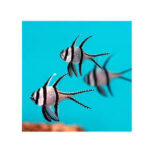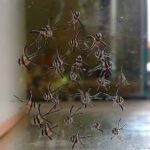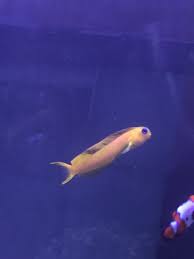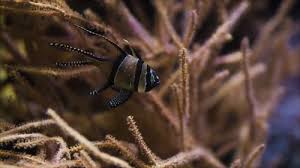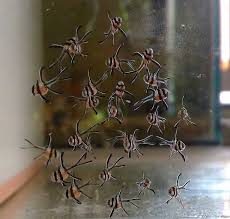In Chinese culture, the dragon (龙, Lóng) has long been regarded as a symbol of power, prosperity, and protection. Unlike the Western concept of dragons as fierce, destructive creatures, the Chinese dragon is a celestial and benevolent force associated with wisdom, good fortune, and the natural flow of energy (气, Qì).
In Feng Shui (风水), the ancient Chinese practice of harmonizing energy within a space, dragons play a crucial role in enhancing wealth, success, and positive energy. Their influence extends beyond theory into architectural design, home decoration, and even city planning.
This article explores the symbolic role of dragons in Feng Shui and how they shape Chinese interior design, focusing on their impact on space arrangement, energy flow, and spiritual well-being.
1. The Symbolic Role of Dragons in Feng Shui
1.1. Dragons as Protectors and Energy Enhancers
- In Feng Shui, the dragon represents Yang energy (阳), strength, and dynamic movement.
- It is believed to bring balance to a space, preventing negative forces from disrupting harmony.
- Many homes, businesses, and gardens use dragon imagery to attract luck and ward off misfortune.
1.2. The Dragon and the Five Elements in Feng Shui
Dragons are associated with different Feng Shui elements, each bringing a unique kind of energy:
- Wood Dragon (木龙): Symbolizes growth and vitality, best placed in the East.
- Fire Dragon (火龙): Represents passion and ambition, ideal for the South.
- Earth Dragon (土龙): Encourages stability and security, suitable for center spaces.
- Metal Dragon (金龙): Enhances wealth and discipline, positioned in the West.
- Water Dragon (水龙): Governs wisdom and adaptability, placed in the North.
Each type of dragon influences the energy of a home or workspace, guiding where dragon symbols should be placed for the best effect.
1.3. The Dragon’s Role in the Four Celestial Animals of Feng Shui
In traditional Feng Shui, the dragon is one of the Four Celestial Animals (四象, Sìxiàng):
- The Green Dragon (青龙, Qīnglóng) – East (Yang, Protection, Good Fortune)
- The White Tiger (白虎, Báihǔ) – West (Yin, Stability, Strength)
- The Red Phoenix (朱雀, Zhūquè) – South (Energy, Transformation)
- The Black Tortoise (玄武, Xuánwǔ) – North (Longevity, Endurance)
For good Feng Shui, the Green Dragon side (East) should always be higher or stronger than the White Tiger side (West) in a house, ensuring a powerful and balanced flow of energy.
2. Using Dragons in Interior Design for Positive Feng Shui
2.1. Placement of Dragon Symbols for Good Luck
- Living Room: A dragon painting or statue facing the main entrance welcomes positive energy.
- Office or Business Space: A golden or metal dragon placed near a desk attracts career success and leadership.
- Bedroom: Avoid placing dragons too close to the bed, as excessive Yang energy can disturb sleep.
- Garden and Outdoors: Dragon sculptures in gardens enhance protection and natural harmony.
2.2. Choosing the Right Type of Dragon Symbol
- Golden Dragon (金龙) – Brings wealth and success.
- Blue Dragon (青龙) – Encourages growth and wisdom.
- Red Dragon (红龙) – Increases passion and motivation.
- Black Dragon (黑龙) – Strengthens protection and career stability.
- Jade Dragon (玉龙) – Enhances spiritual energy and balance.
3. The Influence of Dragons in Traditional and Modern Chinese Architecture
3.1. Dragon Motifs in Ancient Palaces and Temples
- The Forbidden City (紫禁城, Zǐjìnchéng) in Beijing features thousands of dragon carvings symbolizing the Emperor’s divine power.
- Many Daoist and Buddhist temples have dragon-adorned roofs and pillars to guard against evil forces.
3.2. Dragon-Inspired City Layouts
- Some cities in China are designed based on Feng Shui dragon principles, with rivers and roads mimicking a dragon’s movement.
- Beijing’s city plan follows the shape of a dragon, aligning with auspicious energy flow.
3.3. Dragons in Modern Chinese Interior Design
- Many luxury hotels, skyscrapers, and shopping centers incorporate dragon elements to enhance prosperity and attract fortune.
- Feng Shui consultants are often hired to design buildings with dragon-friendly energy flow.
4. Dragons and Water Features in Feng Shui
4.1. The Water Dragon Theory
- In Feng Shui, water represents wealth, and dragons are often depicted riding waves or controlling rivers.
- A small indoor fountain or fish tank in a home can activate the Water Dragon energy, bringing financial success.
4.2. Positioning Water Elements with Dragon Symbols
- A dragon fountain in the front yard invites abundance and prosperity.
- A koi pond with a dragon statue attracts positive energy and career growth.
- A dragon painting above a water feature strengthens the flow of good fortune.
5. Avoiding Feng Shui Mistakes When Using Dragon Symbols
5.1. Too Many Dragons Can Create Energy Imbalance
- Overloading a space with multiple dragons can lead to excessive Yang energy, causing restlessness.
- A single, well-placed dragon is more effective than many scattered ones.
5.2. Dragon Facing the Wrong Direction
- A dragon should never face directly toward a door or window, as it may push good energy out.
- It should be placed to look inward, guiding fortune into the home.
5.3. Low-Quality or Improper Dragon Materials
- Plastic or poorly made dragon decorations can bring negative energy instead of prosperity.
- Dragons made of gold, jade, or wood are recommended for stronger Feng Shui benefits.
Conclusion: Dragons as Powerful Feng Shui Guardians
Dragons hold immense power in Feng Shui and Chinese interior design, serving as protectors, energy enhancers, and symbols of prosperity.
By understanding the proper placement, symbolism, and balance of dragon elements, one can create a harmonious living or working space that attracts luck, success, and well-being.
Whether in traditional palaces, modern homes, or urban planning, the dragon’s presence continues to shape China’s cultural and architectural landscape, reinforcing its timeless role as a guardian of fortune and balance.

